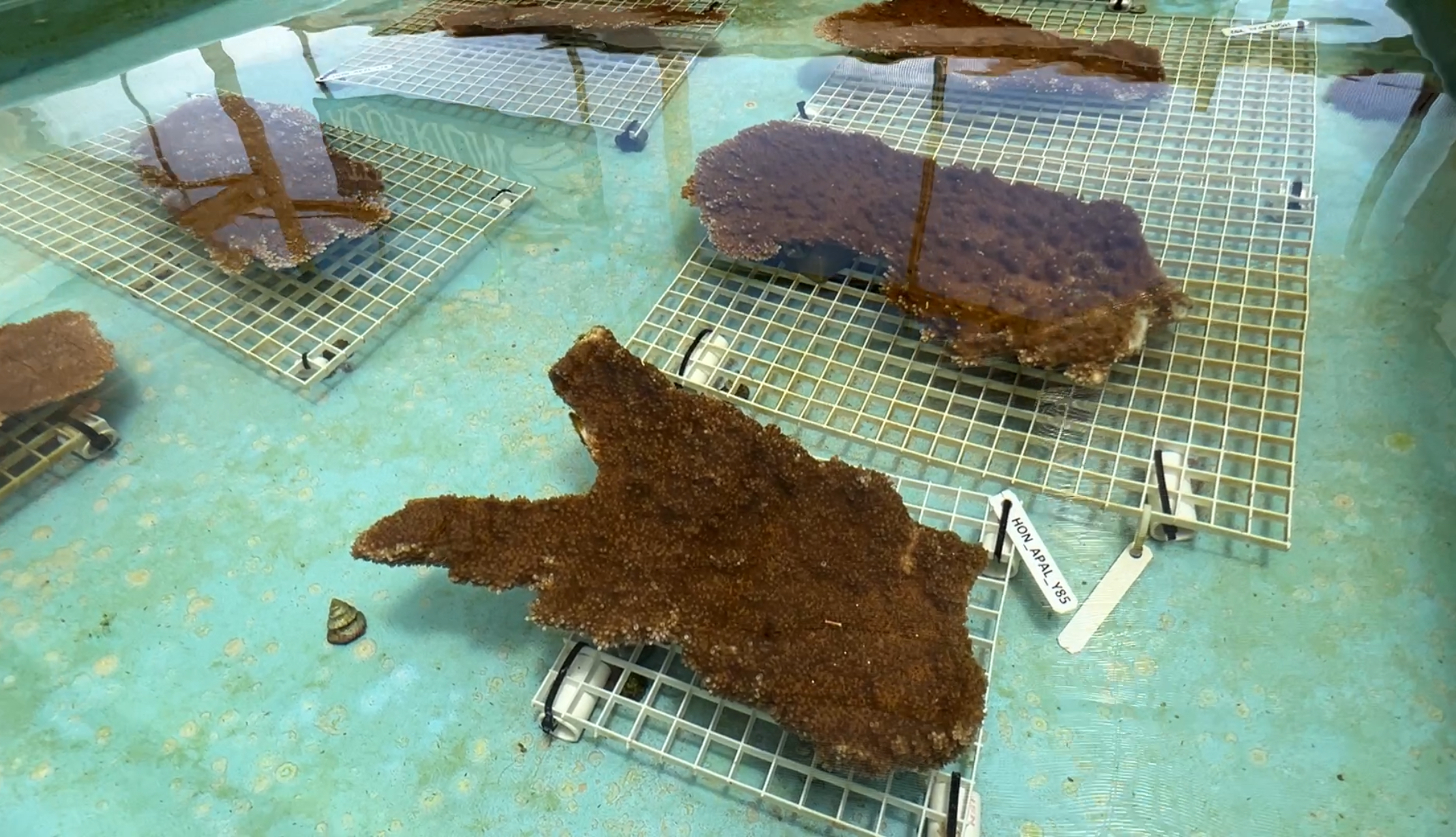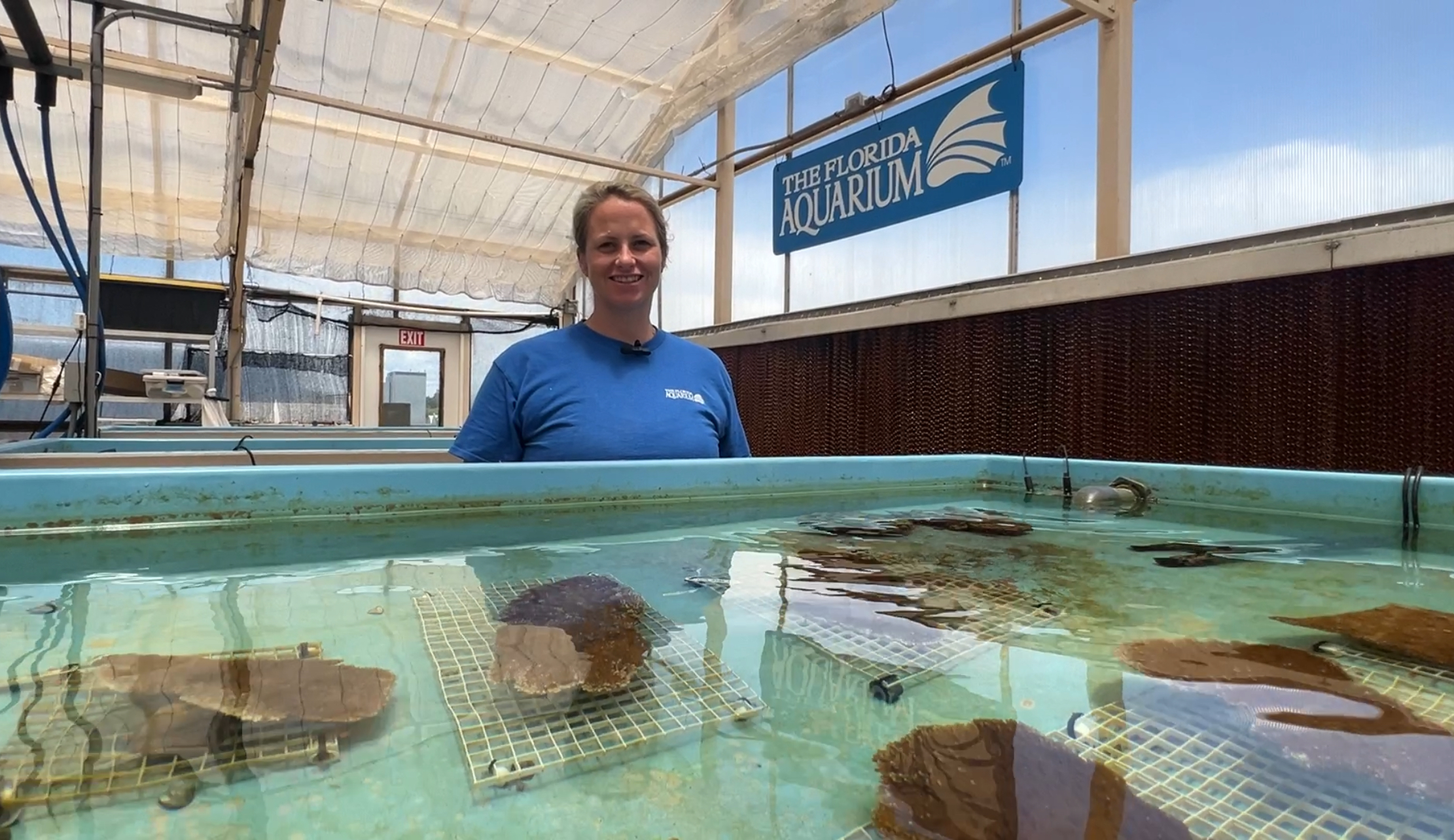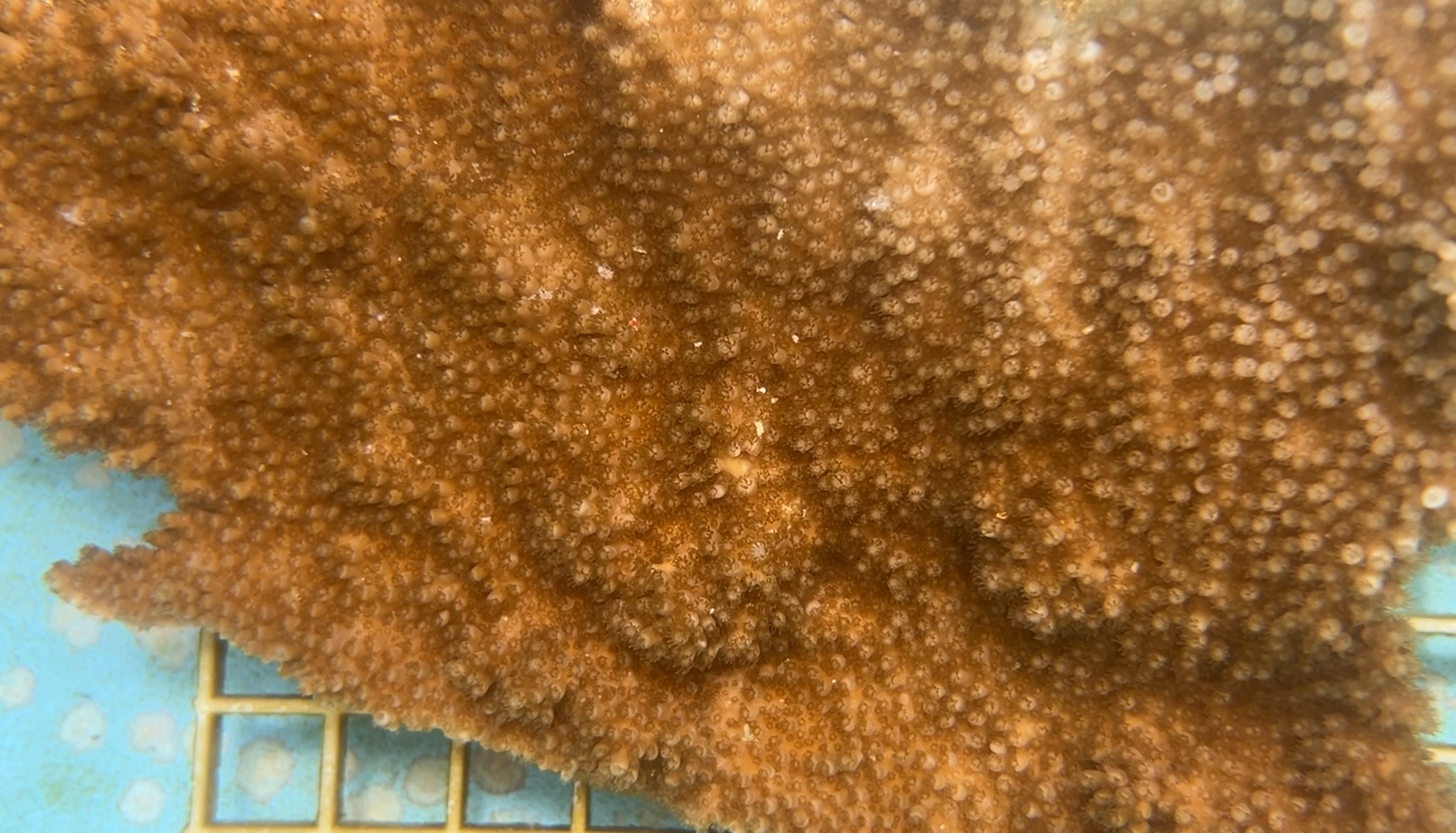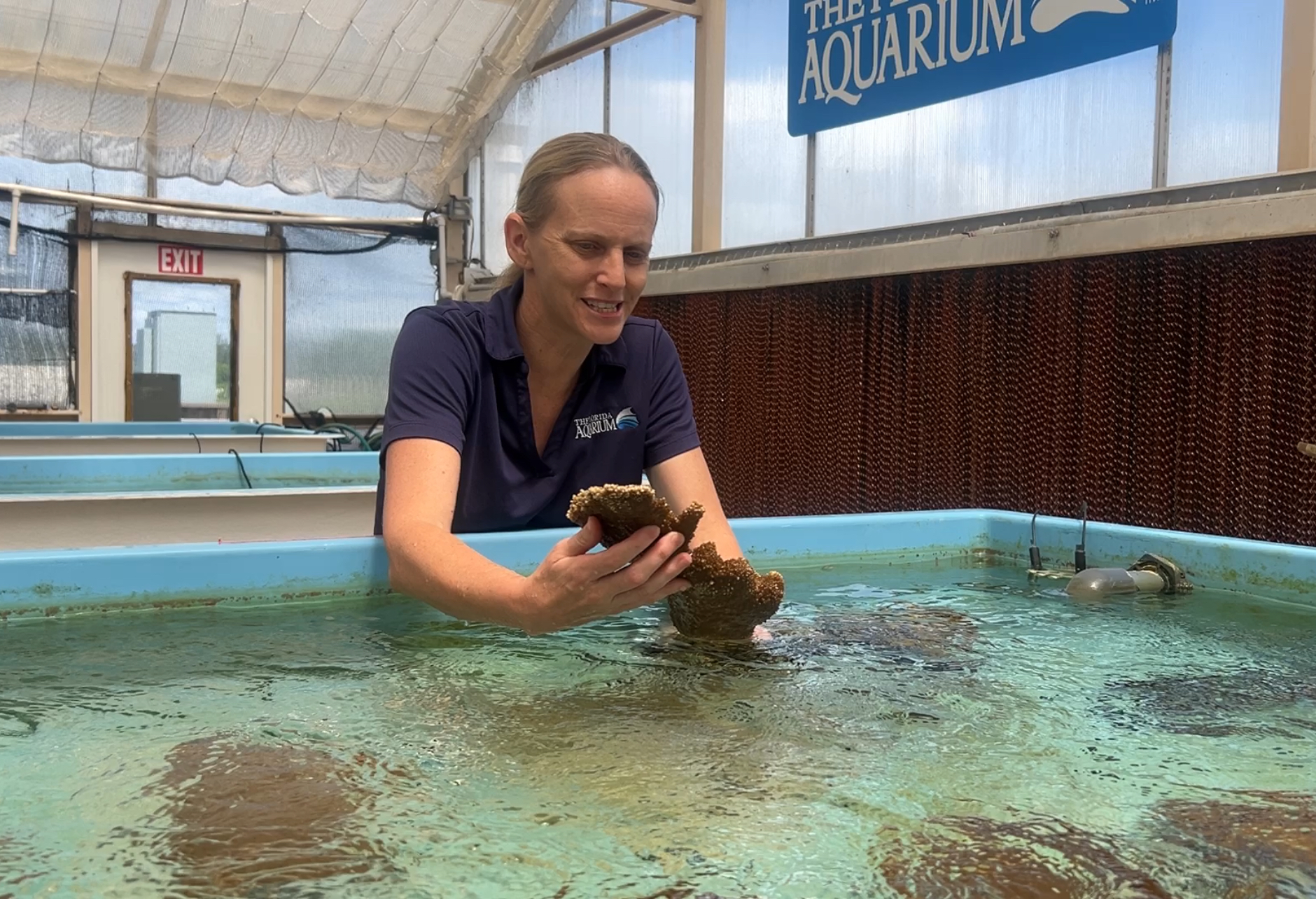In a pioneering effort to overcome the severe impacts of rising ocean temperatures on Florida’s coral reefs, scientists from The Florida Aquarium and the University of Miami Rosenstiel School of Marine, Atmospheric, and Earth Science have embarked on a groundbreaking international mission: To find new coral parents in Honduras that can be bred with Florida corals to create more heat-tolerant, disease resistant babies.
The scientific initiative focuses on Tela Bay, off the northern coast of mainland Honduras, where corals have shown remarkable resilience to conditions that typically cause coral bleaching elsewhere. The reefs in Tela Bay endure extreme temperatures and impacts from a local freshwater lagoon. Despite these challenges, the corals thrive, displaying exceptional resistance to heat stress and disease, particularly elkhorn corals, Acropora palmata, which flourish in the shallowest areas. Could these help create more heat-resistant elkhorn corals in Florida?

The team is led by Dr. Andrew Baker, professor of marine biology and ecology and director of the Coral Reef Futures Lab at the Rosenstiel School. With assistance from graduate students from Baker’s Lab and Antal Borcsok, co-founder and CEO of Tela Marine, the team collected hundreds of DNA samples from ten coral species in Tela Bay, retrieved 13 live fragments of elkhorn coral and 21 small brain coral colonies to study and breed. This marks a world-first attempt to enhance coral heat tolerance through international breeding efforts.
The journey from Honduras to The Florida Aquarium
After a 15-hour journey by sea, land, and air, the live coral colonies landed at Miami International Airport earlier this month. Once cleared by U.S. Customs, the corals were transported to the Rosenstiel School’s coral hatchery facility. There, a team, including staff from The Florida Aquarium, quickly unpacked the corals and transported seven elkhorn colonies to the Aquarium’s Coral Conservation and Research Center in Apollo Beach, a facility renowned for successful elkhorn coral spawning.
“Transporting reproductively sized corals internationally is no small undertaking, and we are thrilled that UM has trusted us with this precious cargo,” said Keri O’Neil, (pictured top,) Director and Senior Scientist at The Florida Aquarium. “These corals are a critical step to help us understand heat tolerance in elkhorn corals, to protect genetic diversity from across the population, and to learn how we can breed a stronger generation of elkhorn corals.”

After a quarantine period where the corals are allowed to settle into their new homes and are carefully monitored for any signs of disease or pests, the Honduran elkhorn corals will be placed into an aquarium system designed to promote coral spawning by mimicking environmental cues such as sunrise and sunset, moon cycles, and seasonal temperature changes. With a little bit of luck, the teams at The Florida Aquarium and UM hope that the new arrivals from Honduras will spawn on the same day as their existing collection of elkhorn corals from Florida, allowing them to cross-fertilize corals from the different regions.
Florida Coral Spawning and Restoration
The success of this initiative hinges on the spawning of both Honduran and Floridian parent corals—both at The Florida Aquarium and the Rosenstiel School—anticipated this summer (July through September). Although the importation of coral broodstock into controlled land-based facilities has been approved, planting the offspring onto Florida’s reefs will require additional state and federal permissions. This regulatory step is essential for the juvenile corals to contribute to conservation of Florida’s elkhorn corals.
Innovative approaches like this are vital to enhancing Florida’s reef restoration efforts amidst rising ocean temperatures and frequent coral bleaching events. In 2019, The Florida Aquarium was part of the first-ever crossbreeding of Florida elkhorn coral with other regions, where elkhorn corals in Curacao were fertilized using cryopreserved coral sperm from Florida.

In this project, hundreds of successful offspring were produced, proving that corals from different regions could successfully cross-fertilize and produce viable offspring. However, due to genetic differences between the Curacao and Florida populations, those corals were not permitted to be released onto Florida’s Coral Reef. Honduran elkhorn corals are more closely related to those in Florida, and the team hopes that this will allow approval for release by regulatory agencies in the state.
Due to the extensive loss of elkhorn corals across the Florida population, which dramatically worsened during last summer’s marine heat wave, the elkhorn coral is one of only two coral species currently approved for a conservation technique called ‘genetic rescue’. Genetic rescue is a process that increases a population’s fitness by introducing new genetic variation, which can be accomplished by assisted migration, or physically moving species to a different area. This technique was previously used successfully with the Florida panther.
“We plan to study these corals to understand why they are so resilient, and also try to breed these corals with Florida’s surviving elkhorn corals to produce new baby corals that might be able to survive Florida’s warmer future,” said Dr. Baker.
The Florida Aquarium remains committed to protecting and reviving coral reefs, and this collaboration represents a significant stride toward ensuring the survival of these vital ecosystems in the face of rising ocean temperatures. To learn more about The Florida Aquarium and its Coral Conservation Program, click here.
About The Florida Aquarium
The Florida Aquarium is a nonprofit organization dedicated to connecting people with marine wildlife, fostering an understanding of the importance of protecting our natural environment, and inspiring impactful conservation actions. Consistently ranked among USA Today’s best aquariums, guests can immerse themselves in extraordinary exhibits featuring nearly 20,000 aquatic and terrestrial animals. An internationally recognized cultural icon, the Aquarium entertains, educates, and boosts the local economy—welcoming more than 1 million visitors last year and generating a $275 million annual economic impact. Currently undergoing a $45 million expansion, the largest in its 29-year history, the Aquarium aims to further enhance conservation efforts and guest experiences.



